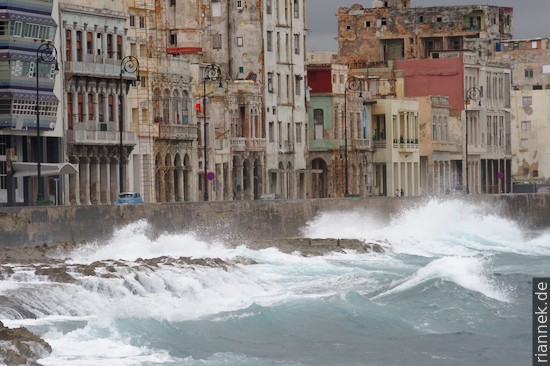
Isn’t it fascinating how stubbornly this small country and its inhabitants defy everything that befalls them? The collapse of the Soviet Union, economic blockade, the lack that comes with it…. Who knows what will happen when Fidel is gone; high time I thought, to drink a mojito to the revolution on this green island lapped by the turquoise waters of the Caribbean. The past is more present in Cuba than almost anywhere else. Large propaganda signs praise Che and the revolution, salsa and trova resound live from the bars (I can no longer hear certain Buena Vista Social Club hits after 4 weeks, though), horse-drawn carriages and 50-year-old cars rumble through the streets between pretty colonial houses that are gnawed by the ravages of time…
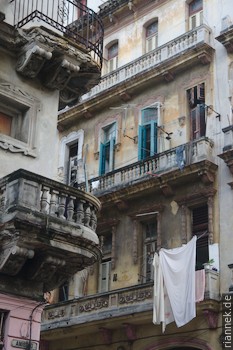
Havana, the sound of the name alone is a delight to melt in your mouth. In the alleys, effervescent life amidst the morbid splendour of half-ruined palaces, laundry fluttering from the balconies, ancient cars rattling by, a carpentry collective here, a shoe factory there behind Art Deco or neoclassical façades from which the plaster is crumbling. The area around the four main squares of the old town, on the other hand, between the elegantly curved baroque cathedral, the Plaza des Armas, once the centre of power, and the Plaza Vieja, is finely spruced up and frequented by crowds of tourists. Just outside the former city walls are magnificent buildings like the Capitol (more or less a copy of the one in Washington), the theatre and the palace-lined Prado, which leads to the sea. There you have a good view along the Malecón, a waterfront street that many equate with Havana.
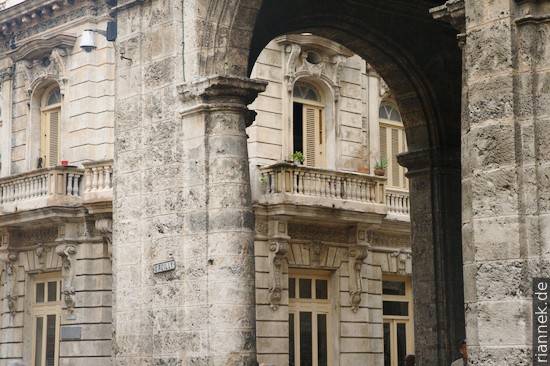
Three hours west lies the small town of Viñales; on the verandas of the single-storey houses the highest density of rocking chairs I have ever seen. In the background, a series of limestone mountains distantly reminiscent of Guilin, though nowhere near as spectacular. This is the centre of tobacco cultivation, but coffee and sugar also thrive. In the remote pine forests I make my first acquaintance with the tiny bee hummingbird: the smallest bird in the world.
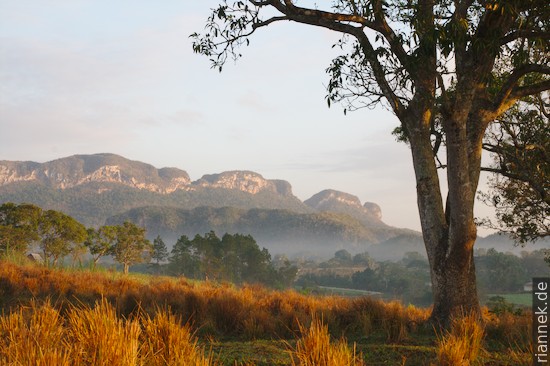
Cienfuegos is located on a peninsula in a wide bay. The neoclassical façades painted in kitschy colours are so small that the columns do not look monumental, but rather cute.
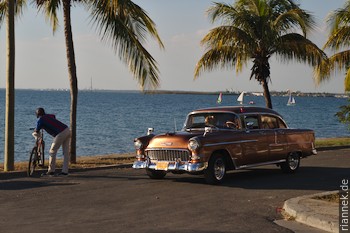
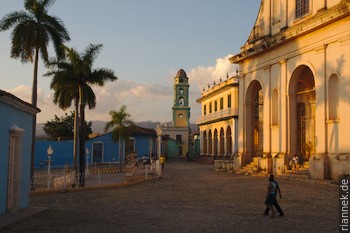
Picturesque Trinidad is the colonial town par excellence for tourists. Beautifully situated between the sea and the mountains, the cobblestone streets lead up and down between the large houses of the sugar barons, who brought the city its wealth based on slave labour, especially in the 19th century. Here I finally make it to the beach, in Cuba more or less the exclusive domain of all-inclusive tourists.
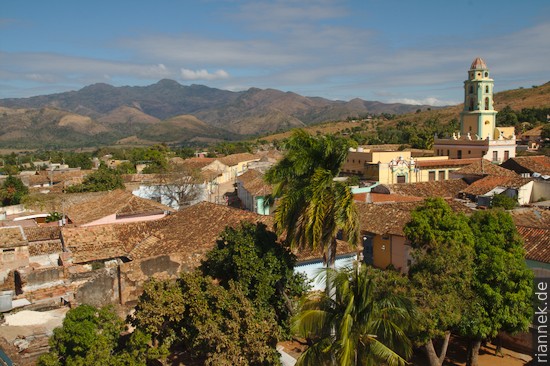
Santiago de Cuba, steeped in history, lies at the end of an elongated bay, behind which rise the mountains of the Sierra Maestra. In the 16th century, it was the capital of Cuba, from here Cortes sailed to conquer Mexico. This is where the rhythms of Cuban music originated, where one of the centres of the war of independence against Spain was, and where Fidel’s armed struggle against Batista’s dictatorship began with the hopelessly unsuccessful attack on the Moncada barracks. The bay is more or less protected from pirates by the impressive Castillo de San Pedro del Morro (all Cuban towns were sacked at least once). From here you have an impressive view along the wild coast to the Sierra Maestra.
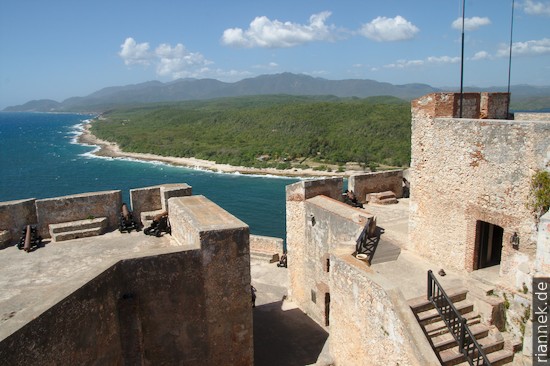
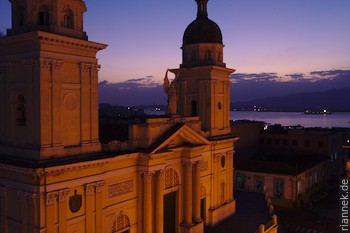
Baracoa is literally in the most remote corner of the island. Although the first settlement founded by the Spanish was here, it quickly sank into insignificance due to its remote location. But it is precisely this location that attracts tourists today: some picturesque bays, now and then a beautiful beach, wide rivers with mangroves in the estuaries and behind them the mountains covered with tropical vegetation. Nearby, I hike with a small group through the Parque National Alejandro de Humboldt. There are over 400 endemic animal and plant species here, including tree ferns. However, two elderly gentlemen annoy me, who tell each other their travel stories in broad Scottish and Australian accents without pausing for breath. About the trocadero, a large colourful bird that is only found in Cuba, one of them says: “there are so many colourful birds at home, a trip to the jungle is always a bit disappointing for me” and goes on to talk about the puma tracks he found in Guatemala……
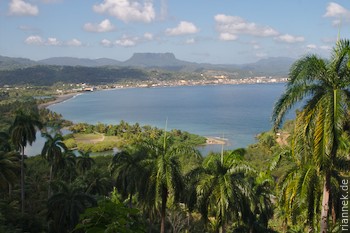
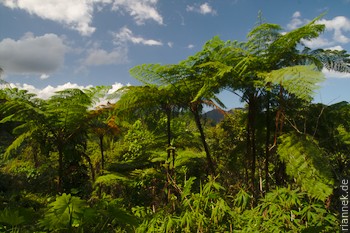
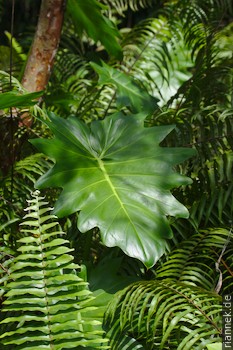
On the way back west, I stop in Camagüey, another colonial town, this time with curved streets, but even that couldn’t confuse the pirates…
Last but not least, Santa Clara: Fidel sent Che with some fighters from the mountains of the Sierra Maestra about 50 years ago to set up a new front in the centre of the island and cut off communication between East and West. Completely worn out after a long march through the swamp, they arrived, only a little later conquering the town of Santa Clara against a well-equipped superior force. They let an army train hop off the tracks, the tanks had no chance in the narrow streets. The loss of the first major city to the rebels was so delicate for the dictator Battista that he fled the country the same day. The revolution had thus won. No wonder Che and several other guerrilleros unearthed in Bolivia found their final resting place here. On the monument itself, Che stands in bronze, accompanied by the appropriate music: “de tu querida presencia Comandante Che Guevara“…
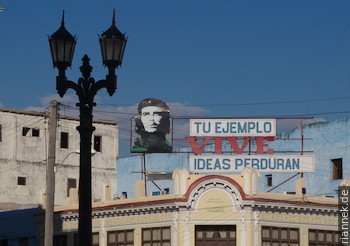
What will Cuba’s future look like? There will probably not be a quick collapse, but slow reforms. Perhaps less repression and surveillance. It is to be hoped that the achievements such as the excellent free health system despite shortages and the good education will remain. For example, a former teacher told me that more and more teachers are leaving the schools: now she has a pension and earns much more. The wages are ridiculous compared to the tips distributed by tourists, no wonder many try to profit. Taxi? Cigars? Una chica? Add to that the strange multi-track currency system, there is still food on a rationalisation card and in addition two different currencies: the peso and for the tourists the convertible. Tourists sometimes pay the same amount in convertible, which is more than twenty times the amount. On the other hand, the shops where you have to pay in convertible have luxury goods ranging from televisions to bouillon cubes, while the windows of the peso shops are quite empty. Window shopping in a provincial town is quite rewarding: a strange, hardly matching range of goods is presented, soap, gaskets and tinned meat… Those who do not have to deal with tourists can hardly afford the expensive convertible shops, accordingly a two-class society has developed in Cuba.

At least the economy is slowly recovering from the shock caused by the collapse of the Soviet Union, even if it is based on little more than sugar and tourism. The blockade of the big neighbour continues to weigh heavily. The transport system is completely overstrained; while tourists are chauffeured in Chinese Aircon buses, Cubans take anything that moves: not only buses and the age-old American sleighs, but also trucks and horse-drawn carriages. The new hope is Chavez’s Venezuela, which trades oil for teachers and doctors. But for how long? Many Cubans compare themselves to the rich tourists, not to the poor countries of Latin America; wishing they had their own cars and MP3 players. However realistic that may be…
No sooner do I get home than Fidel steps down. I would have thought he would have stayed until the 50th anniversary of the revolution in a year’s time.